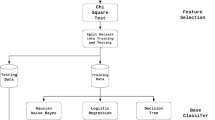Abstract
Network security encompasses distinct technologies and protocols, being behaviour based network Intrusion Detection Systems (IDS) a promising application to detect and identify zero-day attacks and vulnerabilities exploits. In order to overcome the weaknesses of signature-based IDS, behaviour-based IDS applies a wide set of machine learning technologies to learn the normal behaviour of the network, making it possible to detect malicious and not yet seen activities. The machine learning techniques that can be applied to IDS are vast, as are the methods to generate the datasets used for testing. This paper aims to evaluate CSE-CIC-IDS2018 dataset and benchmark a set of supervised bioinspired machine learning algorithms, namely CLONALG Artificial Immune System, Learning Vector Quantization (LVQ) and Back-Propagation Multi-Layer Perceptron (MLP). The results obtained were also compared with an ensemble strategy based on a majority voting algorithm. The results obtained show the appropriateness of using the dataset to test behaviour based network intrusion detection algorithms and the efficiency of MLP algorithm to detect zero-day attacks, when comparing with CLONALG and LVQ.
Access this chapter
Tax calculation will be finalised at checkout
Purchases are for personal use only
Similar content being viewed by others
References
Frank, E., Hall, M.A., Witten, I.H.: The WEKA Workbench, in Data Mining: Practical Machine Learning Tools and Techniques, M. Kaufmann, Ed., 4th ed. (2016). https://www.cs.waikato.ac.nz/ml/weka/Witten_et_al_2016_appendix.pdf
de Castro, L.N., Von Zuben, F.J.: Learning and optimization using the clonal selection principle. IEEE Trans. Evol. Comput. 6(3), 239–251 (2002). https://doi.org/10.1109/TEVC.2002.1011539
de Castro, L.N., Von Zuben, F.J.: The clonal selection algorithm with engineering applications. In: editor (ed.) Proceedings of GECCO, vol. 2000, pp. 36–39 (2000)
Kohonen, T.: Self-Organizing Map. Springer Science & Business Media, New York (2001). https://doi.org/10.1007/978-3-642-56927-2
The Genius Blog. Basics of multilayer perceptron – a simple explanation of multilayer perceptron (2018). https://kindsonthegenius.com/blog/2018/01/basics-of-multilayer-perceptron-a-simple-explanation-of-multilayer-perceptron.html
Fuchsberger, A.: Intrusion detection systems and intrusion prevention systems. Inf. Secur. Techn. Report 10, 134–139 (2005). https://doi.org/10.1016/j.istr.2005.08.001
Hurwitz, J., Kirsch, D.: Machine Learning for dummies. John Wiley & Sons Inc, New Jersey (2018)
IBM. What is machine learning? (2020). https://www.ibm.com/topics/machine-learning
Jones, M.T.: Unsupervised learning for data classification (2017). https://developer.ibm.com/articles/cc-unsupervised-learning-data-classification/
Jones, M.T.: Supervised learning models (2018). https://developer.ibm.com/articles/cc-supervised-learning-models/
Canadian Institute for Cybersecurity: Cse-cic-ids2018 on aws. A collab-orative project between the communications security establishment (cse) & the canadian institute for cybersecurity (cic), University of New Brunswick (2020). https://www.unb.ca/cic/datasets/ids-2018.html
Al Tobi, A.M., Duncan, I.: Kdd 1999 generation faults: A review and analysis. J. Cyber Secur. Technol. 2(3–4), 164–200 (2018)
McHugh, J.: Testing intrusion detection systems: a critique of the 1998 and1999 darpa intrusion detection system evaluations as performed by lincolnlaboratory. ACM Trans. Inf. Syst. Secur. (TISSEC) 3(4), 262–294 (2000)
Mahboubian, M., Hamid, N.A.W.A.: A machine learning based ais ids. Int. J. Mach. Learn. Comput. 3(3), 259–262 (2013). https://doi.org/10.7763/IJMLC.2013.V3.315
Forrest, S., Hofmeyr, S.A., Somayaji, A.: Computer immunology. Commun. ACM 40(10), 88–96 (1997)
Kim, J., Bentley, P.J., Aickelin, U., Greensmith, J., Tedesco, G., Twycross, J.: Immune system approaches to intrusion detection-a review. Nat. Comput. 6(4), 413–466 (2007)
Brownlee, J.: Learning vector quantization for machine learning (2020). https://machinelearningmastery.com/learning-vector-quantization-for-machine-learning/
Demšar, J., et aL.: Orange: data mining toolbox in python. J. Mach. Learn. Res. 14, 2349–2353 (2013). http://jmlr.org/papers/v14/demsar13a.html
Author information
Authors and Affiliations
Corresponding author
Editor information
Editors and Affiliations
Rights and permissions
Copyright information
© 2021 Springer Nature Singapore Pte Ltd.
About this paper
Cite this paper
Ferreira, P., Antunes, M. (2021). Benchmarking Behavior-Based Intrusion Detection Systems with Bio-inspired Algorithms. In: Thampi, S.M., Wang, G., Rawat, D.B., Ko, R., Fan, CI. (eds) Security in Computing and Communications. SSCC 2020. Communications in Computer and Information Science, vol 1364. Springer, Singapore. https://doi.org/10.1007/978-981-16-0422-5_11
Download citation
DOI: https://doi.org/10.1007/978-981-16-0422-5_11
Published:
Publisher Name: Springer, Singapore
Print ISBN: 978-981-16-0421-8
Online ISBN: 978-981-16-0422-5
eBook Packages: Computer ScienceComputer Science (R0)




